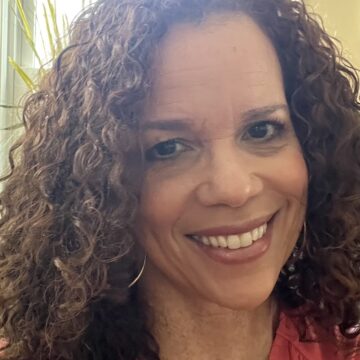The 4 Secrets: The Hidden Factor of Nonprofit Boards & Racial Equity Change
July 8, 2020 4 Comments
I’ll tell you a secret. Most staff embarking on a journey for racial equity change in their organization don’t see board members carrying their weight. I hope to be provocative by offering a few secrets often unshared with boards about their lack of deep participation in equity change efforts. It’s time to have a real discussion about board and staff engagement when it comes to equity change so that the whole organization can collaborate to seed and root transformative change.
Secret #1: Boards still view their roles as promoting diversity in the workplace which is no longer enough to move an organization along a path toward implementing racial equity and justice.
Diversity was the early way to approach change in organizations. The focus was on getting more of this or that group represented on the board and staff, but these efforts lacked a power analysis. Bringing people of color onto the board is very different than ensuring they have positions of power and real authority on the board, or accepting their challenges to unhealthy parts of the board culture or the organization’s way of operating. Boards have also proudly hired people of color or young executive directors and CEOs and then expect them to magically turn around underperforming organizations with little resources and support, or unawarely blocked them from creating truly transformational equity change. Examining issues of power in leadership is an equity and justice pursuit, not a diversity exercise.
Secret #2: Most staff who are deeply engaged in diversity, inclusion, and racial equity efforts believe that their boards are lagging way behind them on the path to change.
Staff committed to racial equity often participate in rigorous and deep training, learning sessions, affinity spaces, and working groups to consider how to challenge the organization’s status quo which likely upholds white dominant culture, practices of racial inequity, and over-centralization of power. They may be attempting to practice new ways of building relationships, making decisions, or handling major racial tensions on interpersonal and institutional levels. In many cases, the board has not had the benefit of these awareness and skill-building moments that could strengthen their capacity to address power dynamics on their board or between staff and board on core organizational questions around racial equity.
Secret #3: Staff see many board members as out of touch or – even worse – contributing to oppression in their organization.
Many boards are recruited for their potential to fundraise or simply to have famous names associated with the organization, rather than to create a balance of people who can bring many types of resources to the organization such as lived-experience and knowledge of a community. Wealthy board members who have not explored the cultural roots of wealth and classism may expect formal decorum in board meetings or social gatherings that is counter-cultural and oppressive to staff. They may believe that they are helping the organization by firing questions at the staff when in reality the way they ask those questions puts staff on the defensive, creating a culture of fear that puts creativity to death. White board members that don’t champion racial equity in a board meeting or fail to interrupt other white members from engaging in paternalizing or direct racist behaviors are seen as supporting racism for failing to act.
Secret #4: Because staff (and especially the executive director/CEO) think board members want them to be “perfect” and share only their accomplishments, staff are reluctant to openly share their struggles and tensions around racial equity.
Staff are wary to share real-time equity tensions in their workplace or programmatic struggles. Simply put, there is not enough candor between staff and boards. Board culture often rewards product over relationship; perfectionism, numbers, and plans over impact and learning from mistakes. Additionally, the executive director is evaluated by the board and the main way for board members to gauge the leader’s effectiveness is the director’s ability to paint a rosy picture of the organization in board meetings. Moreover, board members rarely raise challenging equity issues as a part of board discussions, either to reflect on their own mistakes and challenges, or those of the organization as a whole. They leave that burden to staff.
So what can be done?
- Board and staff need to build trusting relationships where relationships are valued and challenge and mistakes are welcome for learning and growth around racial equity.
- Board members should build trust with staff by showing their own vulnerabilities, giving the staff runway to move their ideas, and avoiding savior thinking that assumes board members have all the answers, or that one executive director who is a person of color will save the day.
- Board members that join any board in this day and age must be willing to jump into a journey to examine how their experiences with race, class, gender, sexual orientation, and generation impact how they see the world and operate in it. They must be willing to face hard truths about their privilege and, without placing the burden on others, champion change and use their privilege (access, resources, knowledge) strategically to shift opportunities to others.
- Board members who come from a position of privilege in any category should embrace new ideas and ways of doing things from leaders that are very different from them or leaders that hold a more bold view of racial justice.
- Boards and staff should work together to ensure that board members sit on diversity/equity/inclusion or racial equity teams with staff to experience, learn, and champion the work for change. And this should involve not just one board member, but a few.
- Boards and staff should come together in joint training and learning sessions for the board and staff to explore issues of racial equity. These sessions should include reflection on how issues of racial equity impacts the mission of the organization as well as how it impacts the organization’s internal culture and operations. Better yet, have the organization go through a comprehensive equity change process that embeds equity in everything the organization does.
What else do you think could shift change so that boards can fully and genuinely support and champion racial equity efforts? We want to hear from you. Please start a conversation with us by commenting below.

4 Comments
Thank you for this important piece. And I love the framing of the secret. I have talked with so many organizational leaders who keep this secret, who have the “chummy” conversations with Board members and avoid deep and honest conversations. I see this piece as a really great way to start a conversation.
I hope that people do more than read it; I hope they use it to engage and to make change.
I am a black male that is a board member and Treasurer for a non profit that advocates for children. My issue with your article is the lack of definition of “racial equity”. It is completely unclear to me what this really means on both a macro and micro level. We have a board/staff working group on racial equity and we are struggling to find a definition that makes sense and is achievable.
Hi Thomas, if I may offer racial equity is defined as both an outcome and a process. As an outcome, we achieve racial equity when race no longer determines one’s socioeconomic outcomes; when everyone has what they need to thrive, no matter where they live.
When we achieve racial equity:
1. People, including people of color, are owners, planners, and decision-makers in the systems that govern their lives.
2. We acknowledge and account for past and current inequities, and provide all people, particularly those most impacted by racial inequities, the infrastructure needed to thrive.
3. Everyone benefits from a more just, equitable system.
Dhalia, great definition. I would add it may go beyond socio-economic factors to include other factors such as health outcomes or life outcomes in general. On #2, appreciate the reference to infrastructure. Racial equity operates on four levels (individual, interpersonal, institutional, and structural). Join our trainings to learn more…